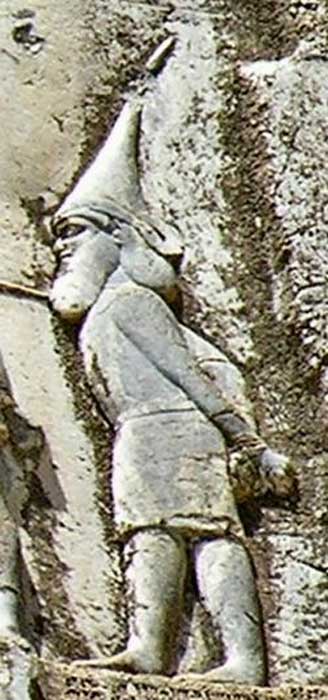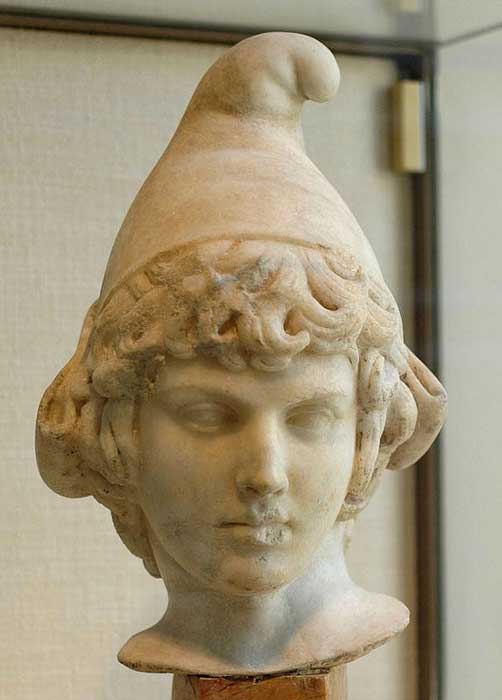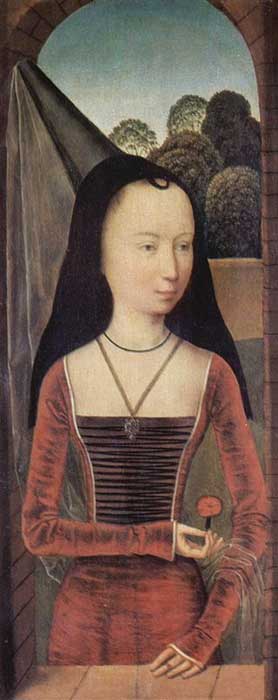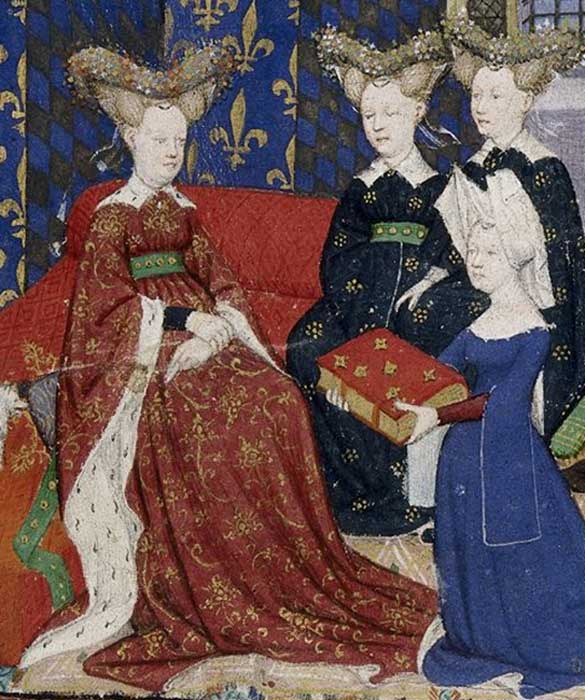
Pointing to Witchcraft: The Possible Origin of the Conical Witch's Hat
If one were to walk down a crowded street wearing a black conical hat, passersby would not question the wearer's intention. Obviously, the wearer would be playing the role of a witch. Yet as obvious as the pointed hat is as a sign of witchcraft today, its origins as representing witchcraft is just as evidently difficult to trace. Conical hats have a long history in the fashions of the world; however, it was not until the pervasiveness of Christianity in the Middle Ages and medieval periods that the term "witchcraft" took on a such nefarious meaning, that a symbol of this role was necessary.

Different type of Hennins. (Flickr / CC BY 2.0)
Though the conical hat as representative of a witch appears to be a fairly recent creation, pointed hats were worn throughout ancient history as symbols of ceremony and ritual. Scholars have determined based from various media (works of art, written records, etc.) that the pointed hat was indicative of ritual from the Bronze Age to the medieval period in the same manner that a horned helmet or scepter was associated with ritual activities. The use of the horned helmet in ritual dates back to the 12th century BC, and continued to be used in the first millennia AD in cultures such as the Celts and Scythians. It is because of artistic interpretations and the weak material by which many of these hats were made that scholars have been led to believe their use for ritual, rather than military purposes.

Skunkha, king of the Sakā tigraxaudā ("pointed-cap-wearing Sakae", a group of Scythian tribes). (livius.org)
Pointed hats were also a sign of untrustworthy foreigners. For example, in ancient Greek texts and art works, any figure described or shown as wearing a soft, slightly pointed cap (also called a Phrygian hat) was considered a barbarian. This barbaric status was also associated with rites deemed unholy or despicable by the primary culture (in this case, the Greeks). Yet it is only in the early modern period that they begin to be associated with witches in particular, thanks to the images of witches as used in anti-witchcraft pamphlets such as Mathers' Wonders of the Invisible World (1689) or woodcuts such as those made by William Dodd (1720).
- The Mystery of the Four Golden Hats of the Bronze Age
- Why Did the Spanish Inquisition Allowed Some Witches to Stay Alive?
- Agnes Waterhouse: The First Woman Executed for Witchcraft in England

Buste of Attis as a child, wearing the Phrygian cap. (Public Domain)
It has been postulated the use of a conical hat to denote witches might have stemmed from an exaggerated form of hennins, a type of cone-shaped headdress commonly worn during the Middle Ages. Though the hennin was indicative of the noble status of the female wearer, its popularity during the religiously uncertain era of the Middle Ages and the ease with which women were accused or convicted of witchcraft by other jealous women or angry men during this time makes it not unlikely to presume this might have been when the conical hat became associated with witchcraft.

Young woman in a conical hennin with black velvet lappets or brim and a sheer veil (Public Domain)
The most critical evidence for the use of the pointed hat to indicate witchcraft likely comes from the opinion of the Church. In the medieval period, it is believed that the clergy and devout practitioners of the faith despised the pointed hat because it reminded them of the horns of the Devil. This theory is further supported by the fact that witches were often believed to have been followers of the Devil from the Middle Ages to the Victorian Era, as the idea of the "good witch" did not really gain momentum until the 20th century.

Christine de Pisan presents her book to Queen Isabeau of France. She and her ladies wear jewelled heart-shaped stuffed or hollow "bourrelets" on top of hair dressed in horns. Christine wears a divided hennin covered in white cloth. (Public Domain)
Even though witchcraft has been a belief throughout history (albeit in various forms), it gained its status as a negative force during the medieval and early modern period, when the Church damned it as Devil worship. It was used to explain heresy and the spread of diseases or failed crops. In the 15th century, there was even a manual created on how to properly engage in witch-hunting, and what signs to be aware of when attempting to recognize a witch.
- Witch Familiars, Spirit Guardians and Demons
- World Famous Ancient Siberian Venus Figurines are NOT Venuses After All
- Archaeologists Identify Scottish Church Where Accused 16th Century Witches Were Imprisoned
This manual, coupled with the already growing fear of Devil worship among the religiously devout, created an epidemic of damning women as witches (as men were less commonly witches according to the manual). It is very possible that, as this book was published during the height of hennin fashion, this is where the association of witches and the conical hat began. Regardless, the long-standing past traditions of ancient cultures as using a pointed hat to imply a magical, ceremonial status most likely did not help the wearers of the hennins fight this belief, further damning many innocent women as witches and creating a prominent sign of witchcraft in the process.
Top image: Full garment and headdress reconstruction made by Krym Altynbekov. Photo courtesy of Krym Altynbekov.
By Ryan Stone
Bibliography
Bartrum, Giulia. 1995. German Renaissance Prints, 1490–1550. London: British Museum Press.
Guiley, Rosemary. 2008. The Encyclopedia of Witches and Witchcraft. Checkmark Books: NY.
Jensen, Gary. 2006. The Path of the Devil: Early Modern Witch Hunts. Rowman & Littlefield Publishers: MD.
Pócs, Éva and Gabor Klaniczay, ed. 2008. Witchcraft, Mythologies and Persecution (Demons, Spirits, Witches Vol. 3) Central European Press: Hungary.
"The Power of Solanacease: Witchcraft in the Middle Ages." Accessed 14 August 2016. http://www.fs.fed.us/wildflowers/ethnobotany/Mind_and_Spirit/witchcraft.shtml
Williams, Howard. 1865. The Superstitions of Witchcraft. Project Gutenberg. London: Longman, Green, Longman, Roberts, & Green. Accessed 14 August 2016.
















Comments
Wow - you missed the whole story - the conical hat was worn by Jews in medieval times (pointed hat with brim) - there are many historical photographs of this yet you manage to not find it. It is thought that the association between Jews (who openly practiced some forms of magic) and Satan was made and this may be the origin of the wtiches hat.
Horned ladies hats in the middle ages & earlier, such as in E. Europe & Russia, usually referred to ancient female fertility power - the Fallopian tubes - to the point where the horn ends were even accentuated with tassels or fringe to emphasize the ovaries. In India, where female cattle are venerated, the same accents often extend to the ends of decorated cow horns with flowers/ fringe.
In many older cultures, women/midwives who gave/aided birth were often designated to show the souls they brought into the world out, so they were the ones that treated the bodies of the dead before burial, which included mummification. Such women would gain a knowledge of the body's innards & their workings, especially for their own gender.
I believe the myth stems from "pyramid" shaped hats.
Witches, sorcerers, and in more modern times, "dunces" hats.
Perhaps they could draw energy from such shapes. Food for thought. :)